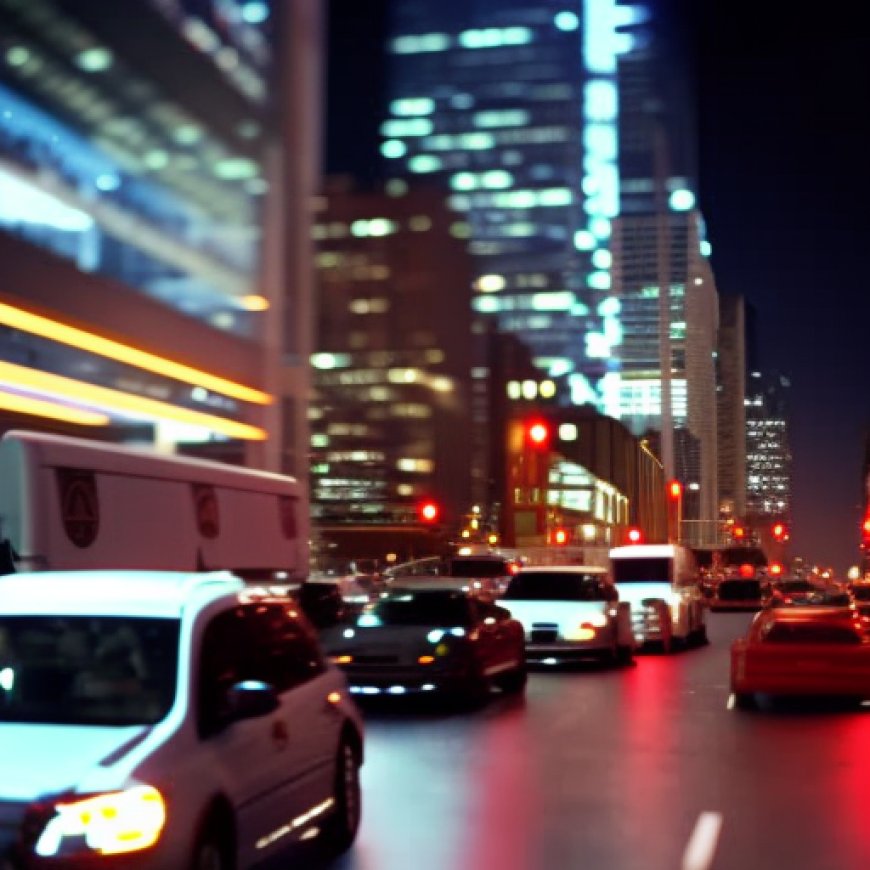Congestion Pricing Could Bring Cleaner Air. But Maybe Not for Everyone.
Congestion Pricing Could Bring Cleaner Air. But Maybe Not for Everyone. The New York Times


New York City’s Congestion Pricing Aims to Reduce Air Pollution and Carbon Emissions
As New York City prepares to implement its new congestion pricing system next month, officials anticipate a range of benefits in line with the Sustainable Development Goals (SDGs). The tolling system is expected to generate revenue for mass transit improvements, reduce traffic congestion, lower air pollution, and cut carbon emissions that contribute to climate change.
Anticipated Benefits of Congestion Pricing
- Generation of revenue for mass transit improvements
- Reduction in traffic congestion
- Decrease in air pollution
- Reduction in carbon emissions
The Metropolitan Transportation Authority (MTA), which will operate the system, has already installed devices to monitor cars and bill drivers. The MTA has also outlined the transit repairs and upgrades it plans to fund with the revenue from the tolls.
Impact on Greenhouse Emissions and Air Quality
While the congestion pricing program aligns with New York State’s goal to reduce greenhouse emissions by 85 percent by 2050, the exact contribution of the program to this target remains uncertain. There are concerns that while air pollution may decrease in Manhattan, Brooklyn, and Queens, rerouted traffic could lead to increased pollution in the Bronx and Staten Island.
- Manhattan, Brooklyn, and Queens may see a decrease in air pollution
- The Bronx and Staten Island could experience increased pollution due to rerouted traffic
Eric A. Goldstein, a senior attorney and New York City environment director at the Natural Resources Defense Council, believes that the direct air-quality benefits will be modest but measurable. He emphasizes the importance of the plan for public transit, which is crucial for encouraging people to use alternatives to private vehicles.
Lessons from Other Cities
Looking at similar programs in London and Stockholm, officials note improved traffic conditions, modest air quality improvements, and significant benefits for their transportation systems. These examples suggest that New York City’s congestion pricing could yield similar results.
- London and Stockholm have seen positive outcomes from similar programs
- New York City could experience improved traffic and air quality
- Enhancements to public transit are a key benefit of congestion pricing
In conclusion, New York City’s congestion pricing system is a step towards achieving the SDGs by promoting sustainable cities and communities (SDG 11), ensuring responsible consumption and production patterns (SDG 12), and taking urgent action to combat climate change and its impacts (SDG 13).
SDGs Addressed in the Article
- SDG 11: Sustainable Cities and Communities
- SDG 13: Climate Action
Targets Under the SDGs
SDG 11: Sustainable Cities and Communities
- Target 11.2: Provide access to safe, affordable, accessible and sustainable transport systems for all.
- Target 11.6: Reduce the adverse per capita environmental impact of cities.
SDG 13: Climate Action
- Target 13.2: Integrate climate change measures into national policies, strategies, and planning.
Indicators in the Article
The article does not explicitly mention indicators, but it implies the following:
- Indicator for Target 11.2: Proportion of population that has convenient access to public transport, by sex, age and persons with disabilities.
- Indicator for Target 11.6: Annual mean levels of fine particulate matter (e.g., PM2.5 and PM10) in cities.
- Indicator for Target 13.2: Greenhouse gas emissions per capita.
Table of SDGs, Targets, and Indicators
| SDGs | Targets | Indicators |
|---|---|---|
| SDG 11: Sustainable Cities and Communities | Target 11.2: Access to transport systems | Proportion of population with access to public transport |
| SDG 11: Sustainable Cities and Communities | Target 11.6: Reduce environmental impact | Annual mean levels of fine particulate matter in cities |
| SDG 13: Climate Action | Target 13.2: Integrate climate measures | Greenhouse gas emissions per capita |
The article discusses the implementation of congestion pricing in New York City as a measure to reduce air pollution and carbon emissions, which is directly related to SDG 11, specifically targets 11.2 and 11.6, aiming to improve public transport and reduce environmental impact in urban areas. It also touches on SDG 13, target 13.2, by addressing measures to integrate climate change strategies into city planning, with the goal of reducing greenhouse emissions by a certain percentage by the year 2050.
Copyright: Dive into this article, curated with care by SDG Investors Inc. Our advanced AI technology searches through vast amounts of data to spotlight how we are all moving forward with the Sustainable Development Goals. While we own the rights to this content, we invite you to share it to help spread knowledge and spark action on the SDGs.
Fuente: nytimes.com

Join us, as fellow seekers of change, on a transformative journey at https://sdgtalks.ai/welcome, where you can become a member and actively contribute to shaping a brighter future.







